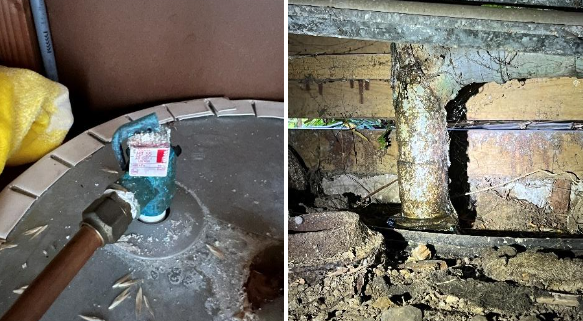Building basics – Plumbing
Unexpected plumbing problems in your new home can really take the shine off that exciting purchase. That’s why a comprehensive property inspection is a must before you sign on the dotted line.
Plumbing issues can run the gamut from minor and fixable, right through to being expensive and incredibly disruptive. Because much of your home’s plumbing will be hidden in walls, under the ground, foundations, or in your ceiling space, you may not even know there is a problem in the first place. So here are some things your property inspector will look for:
Reticulated plumbing and deteriorating pipework
Reticulated plumbing refers to the water network or water pipes which service your home. The water is fed through large pipes from the public mains or pumped from water tanks to meet the pipes which supply water to your bathrooms, kitchen, toilets, taps etc. One of the first things your inspector will look for is the condition of your pipes (where visible) and the types of pipes used.
There are some older types that are more problematic than newer ones, which some insurance companies will be reluctant to cover (if they fail and cause damage). An example is a galvanized pipe – common to an older villa – which, while it might appear fine on the exterior, could be completely rusted out. This will mean water running through the pipes will move debris and gunk into your fittings, while your water quality might suffer too.
If a bathroom or kitchen has been upgraded, it is likely that replumbing has also been carried out. While ‘replumbing’ might fill a purchaser with some confidence, new piping and plumbing doesn’t mean you can rest easy. During the late 1970s and early 1980s, a particular type of black plastic called Dux Quest piping was introduced into new houses as well as retrofitted into existing homes. However, it soon became clear that many of these new pipes were splitting, bursting and causing considerable damage, so Dux Quest was withdrawn from the market. If your property inspector spots black plastic piping from a renovation or home dating from this period, it may need replacing. And it’s another red flag for your insurance company, which might not cover you for leaks or other plumbing issues.

Looking for leaks
Turning on taps, running showers and flushing toilets are all on the list for your property inspector, who will be looking for leaks, wobbly fixtures, or loose fittings to be sure everything is operating well. If the pipes inside a wall aren’t fixed off (attached) properly, you might get a ‘water hammer’ which is a banging or clanging of the pipes against the wall or studs. Not just annoying, this can cause early damage to the fittings and pipes by helping them work loose. Toilet flushers not working, or the toilet ‘running’ can also be an annoying sound to hear in the night, while wasting water and contributing to a higher water bill.

Moisture readings and bad smells
A moisture meter will pick up signs of moisture or leaks around the house, especially if there is mould present as well. Brown spots on the ceiling where there’s a bathroom above could also be a sign that there’s water leaking. If there is a significant leak – for example, under the shower – your property inspector should be able to pick this up when inspecting the sub floor. A persistent bad smell from a sink or drain could also indicate a blockage or break in the sewer line, or that the plumbing hasn’t been installed correctly.
Are the pipes clipped up?
While under the house, an important thing your inspection will note is if pipes are well fitted to the sub-floor. Are they clipped up to the timbers properly, or are they just lying on the ground? If they’re on the ground, there’s more risk of damage from pests, movement, floods or heavy rain, or from people going through there.

Recap: When it comes to plumbing, forewarned is forearmed! So, the big two to keep in mind when thinking about your next home’s plumbing are:
- The types of pipes used (and the era they were installed)
- Making sure the plumbing pipes are installed properly and clipped up under the house.
Remember, if your property report highlights any plumbing issues, we recommend getting a plumber to check off if you need any imminent or future repairs. When you invest in a comprehensive property inspection from our friendly, professional team, you can rest easy that purchasing your next home is more than ‘a pipe dream’.








